5 Benefits of Building a Modern Processing Center
If you’re one of the several counties that have heard the rumor about the new Polk Co. Processing Center being extremely appealing and innovative, buckle up because you’re about to want to build your own identical facility. Located in Bartow, Florida, and home to almost 40 surrounding cities, Polk Co. started fully operating in their new processing facility in May 2021. With these impressive rumors spreading throughout the industry, I decided to meet with Captain Tom Laurell of Polk Co. Sheriff's Office and tour the processing center myself.
My main objective was to learn how this new processing center operates more efficiently than its previous facility. Thus, I treated the tour as an inspection of obstacles that staff and inmates would have to overcome. However, without ever even visiting the previous facility, as soon as I was welcomed through the sally port, I had zero doubt in my mind that this location was by far the most impressive and groundbreaking processing facility Polk County has operated in.
Benefit 1: The Red Carpet Entrance
Okay, there isn’t actually a red carpet entrance, but you could be fooled by the amount of visual appeal the sally port has to offer. Anyone brought into the facility is first driven into a large sally port with four heavy-duty bi-fold entrance and exit doors.
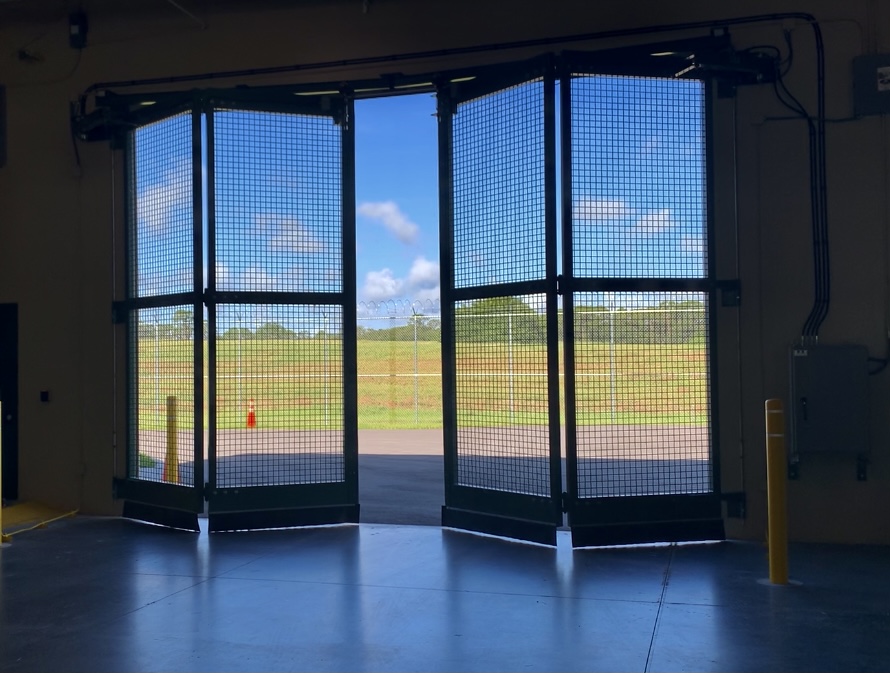
These doors are a massive improvement from their last facility as they only had a single door that would scroll up and continuously get stuck in the process.
Now, once the arrestee is taken out of the vehicle, they are led into one of the two separate entrances into the facility: one entrance being for adults and the other entrance being for juveniles. The two separate entrances ensure that the paths of minors and adults are not crossed. This is a solution from their previous facility that only had one entrance for any arrestee brought in. Before entering one of the two doors, there is a shower located in the corner of the sally port for anyone who is brought in covered in debris (those who hid in swamps or are covered in chemicals) and can be washed off before they’re booked into the facility.
There is also a third door placed on the other side of the sally port, away from the two entrances, that was built specifically for those who are being released; therefore, their paths do not cross anyone who is entering the building. For a facility that books roughly 30,000 people a year, it’s important to separate the individuals as much as possible.
Benefit 2: Layers of Protection
As you are escorted into one of the two entrances, you are greeted by the first layer of protection. Similar to the machine you walk through at the airport, a tall metal detector catches any metal object on a body or clothing item.
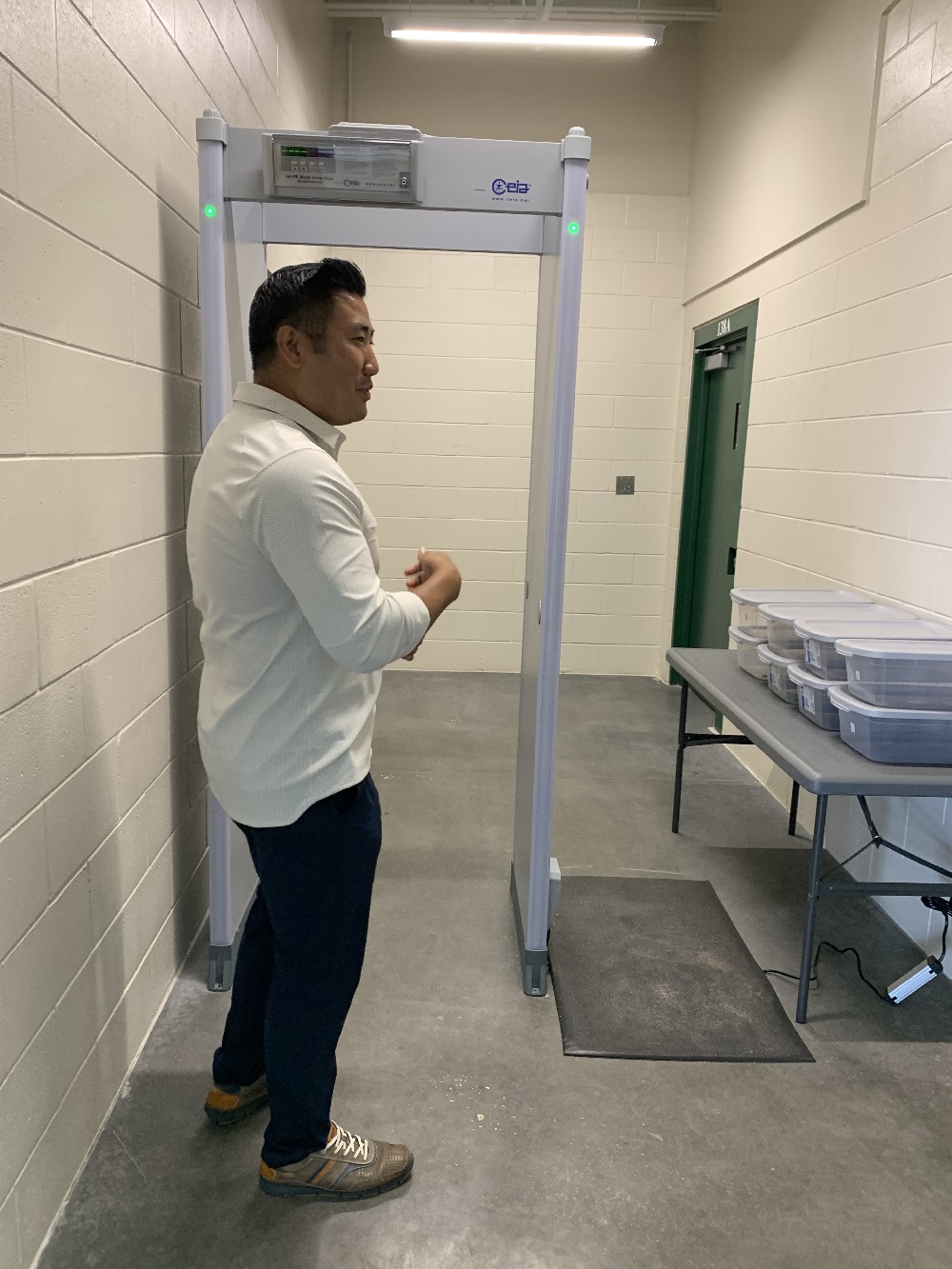
The second layer of protection is the pat down and wand detector search performed by staff. The third layer of protection is the SECURPASS, where the arrestee stands up and has a full X-ray taken of their body.
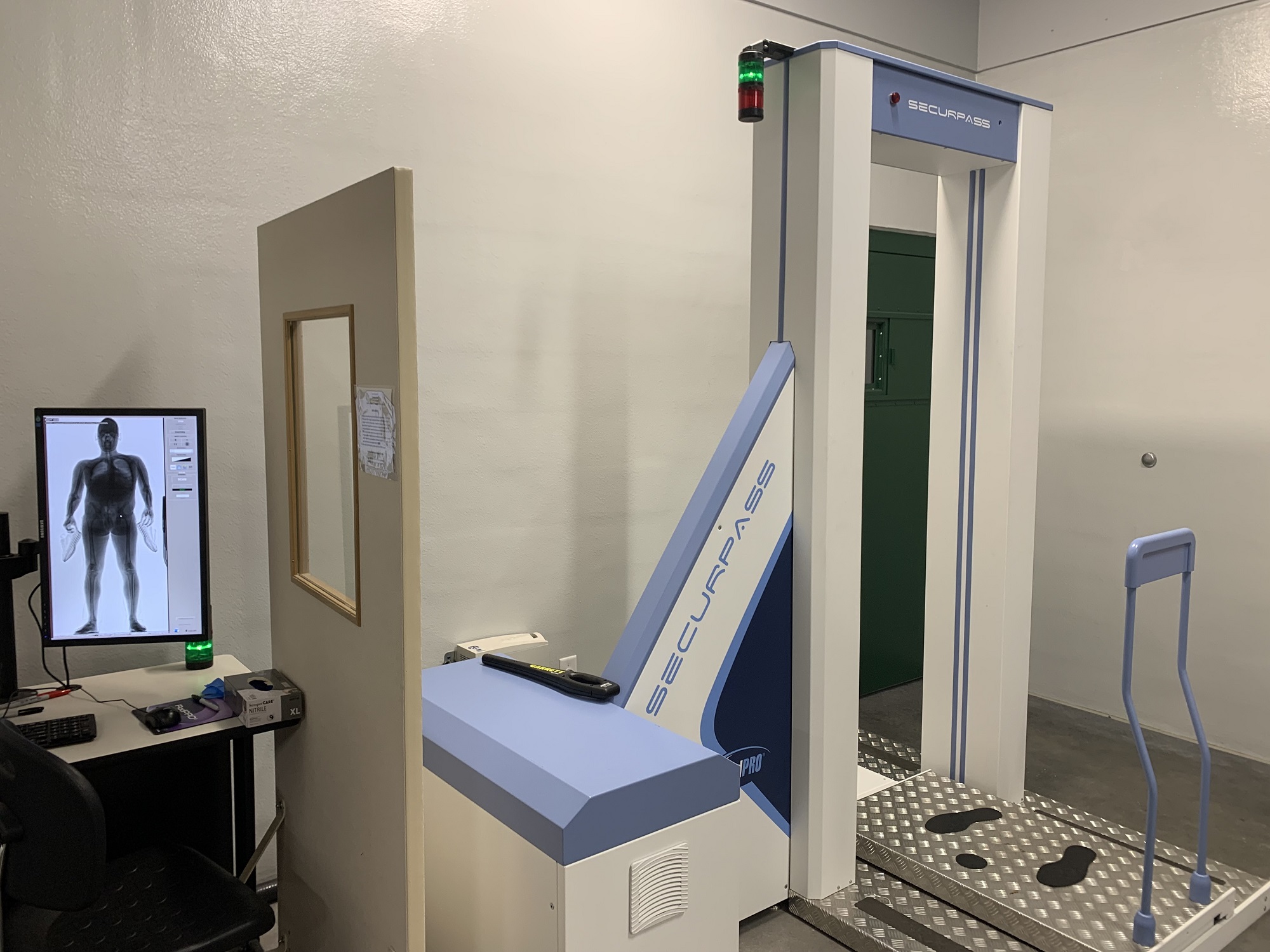
After these security checks, the arrestee is then placed into one of the clear glass cells and remains in handcuffs until they are brought into the processing area. If at any time something suspicious is found during any of these searches, staff automatically will conduct a strip search on the arrestee.

Benefit 3: Storing Inmate Property
Once ready for processing, the arrestee will swap their clothing and personal belongings for a uniform to change into. Their belongings are kept in a clear, plastic bag and are shrink-wrapped to eliminate any air.
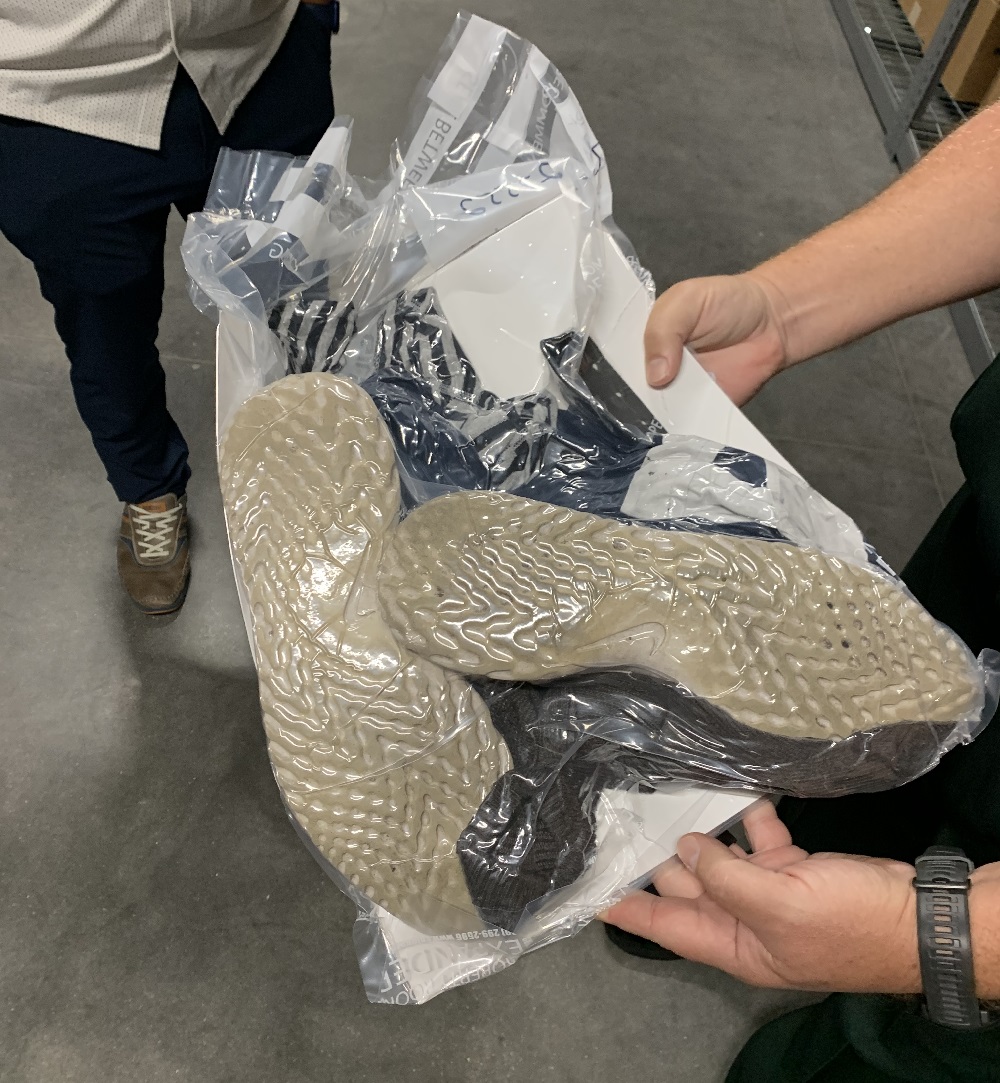
This is a massive upgrade from their previous practice of storing the belongings in brown paper bags as it took up more space, was difficult to identify the items inside, and caused a strong odor (think about all the socks and shoes!). In the previous facility, the brown paper bags were placed on standard shelving and caused an immense amount of confusion when searching for specific items. Now, these clear, plastic, shrink-wrapped bags are stored in the Inmate Property Room that contains roughly 3,000 bags and are neatly organized by hanging racks. Not only has the method of storing the equipment improved, but also the organization process.
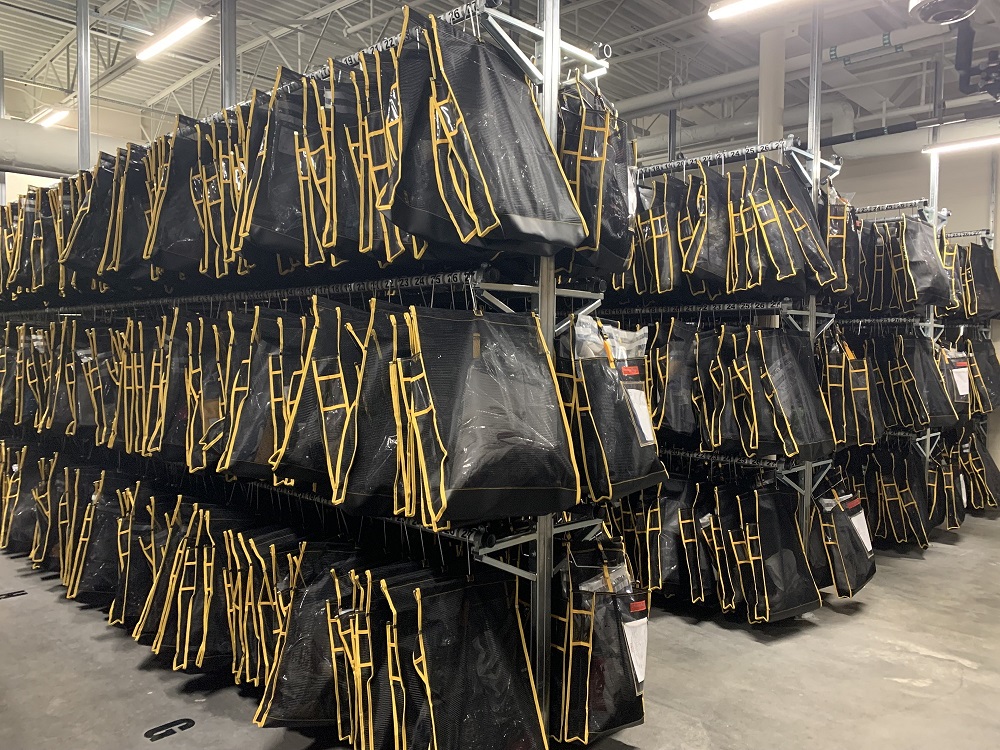
Benefit 4: Open Concept with Privacy
After taking mugshots and capturing fingerprints, the arrestee is allowed to sit and wait in the processing center’s waiting area. Almost identical to the DMV, the waiting area is open concept and allows arrestees to wait for their names to come across the screen before they can approach the desk for further directions.
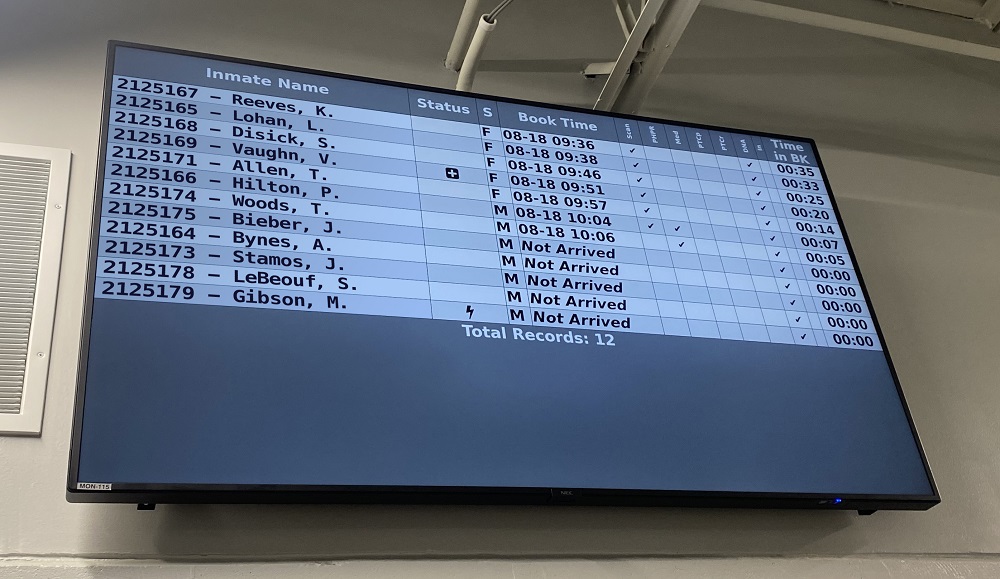
In this waiting area, they can access medical and pretrial services through video cameras - or speak to a clerk through a phone booth. Each of these services is sectioned off and has a small space for privacy, whereas the previous facility was wide open for anyone to eavesdrop on. Eight hours is the maximum time for anyone to stay in the processing center once they are processed. Within those eight hours, they are released in three ways: to the public, shuttled to one of the two county jails, or brought to court.
In case anyone acts up within those eight hours, they are moved into one of the holding cells that surround the waiting room. Four of these holding cells are fully padded, including the wall, ceiling, and floor, to protect arrestees that act out.
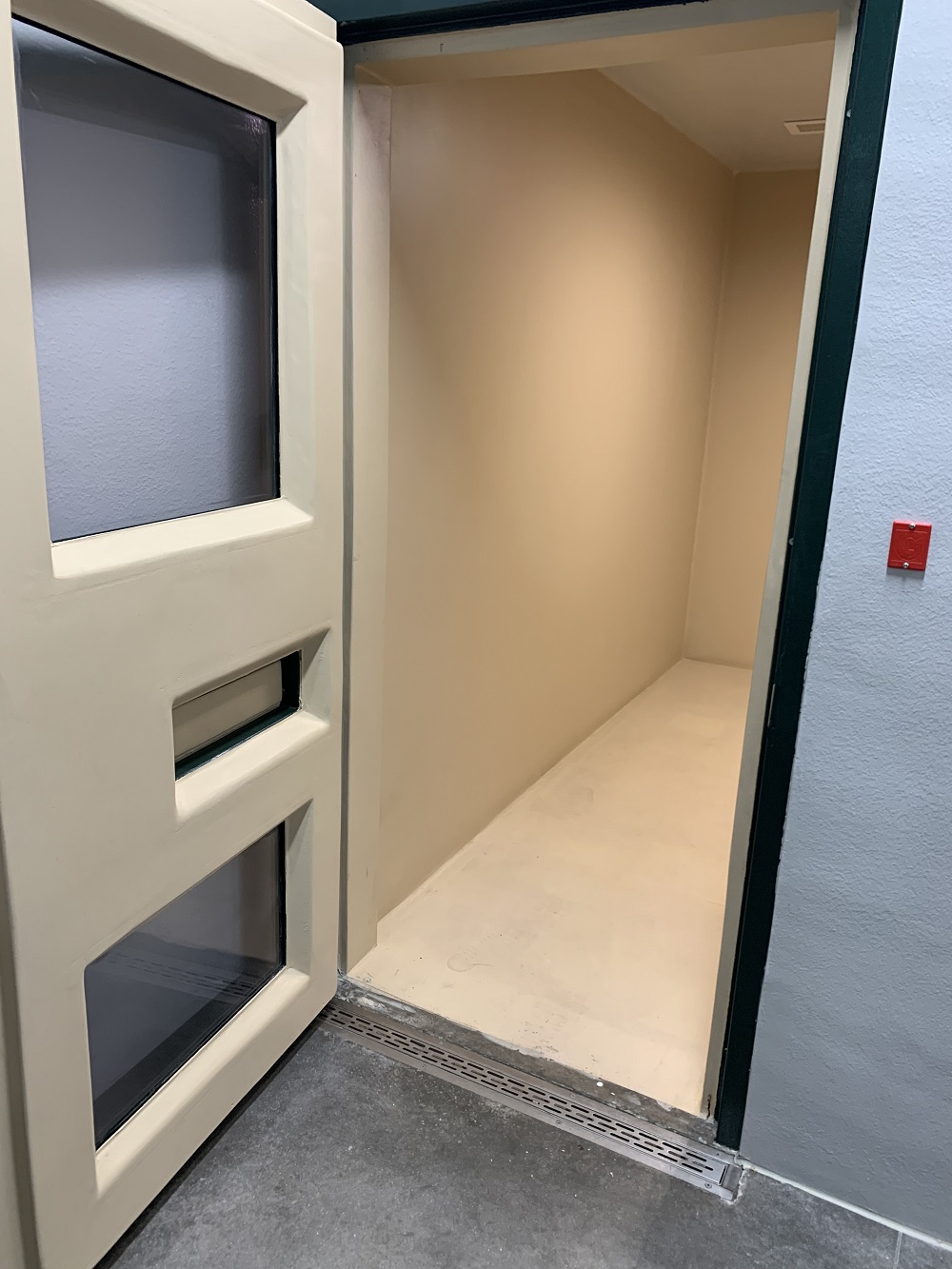
There are also drains on the outside of each cell if the inmate tries to flood their cell (drains aren’t located on the inside, so they can’t clog the drain).
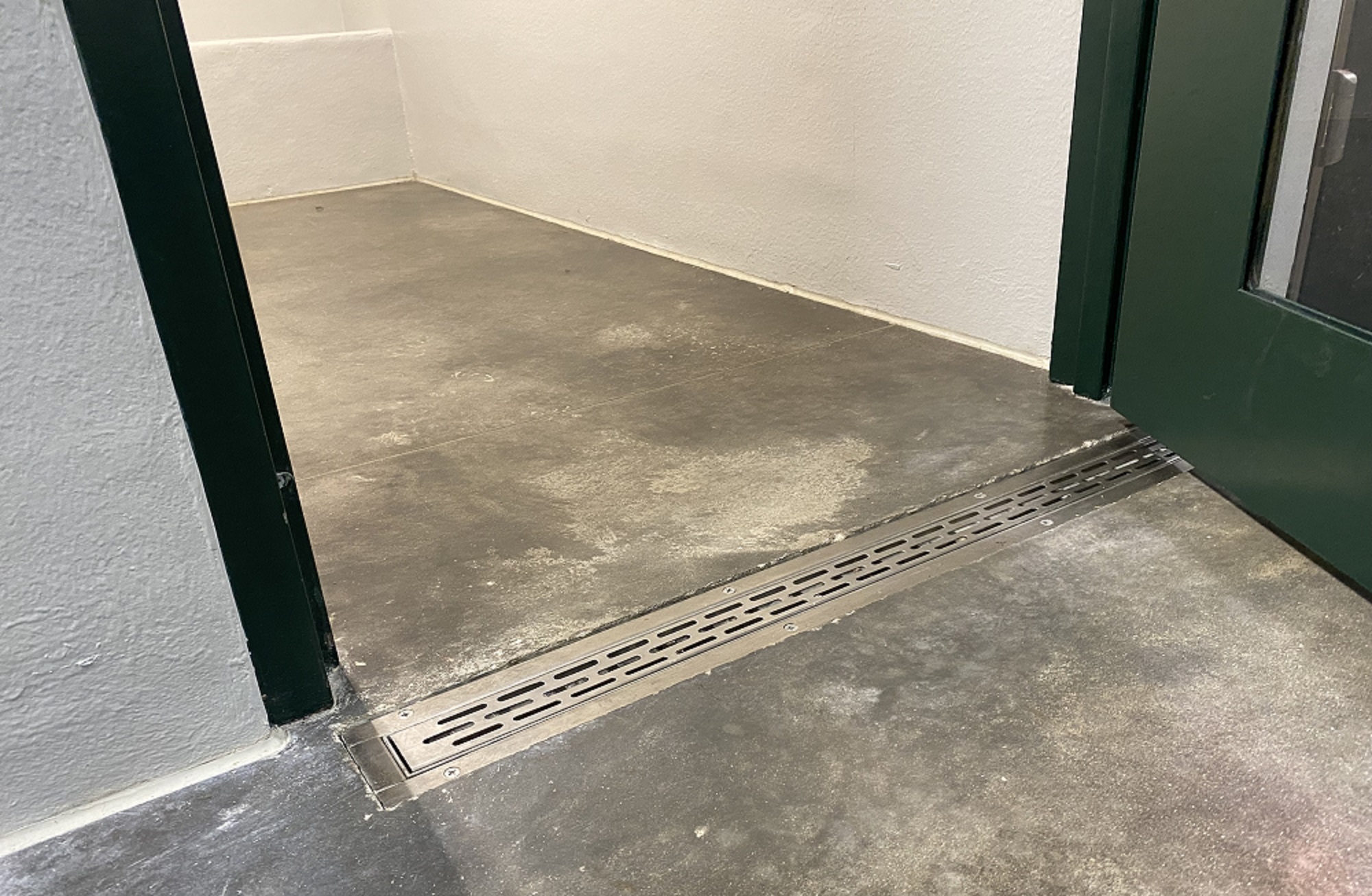
The medical room in the new processing facility is leaps and bounds higher quality than the previous facility’s medical room. The new room is separated by glass windows and holds three cubicles of nurses available at any given point in time while also providing some privacy. The medical room in the previous facility was out in the open and easily able to be disturbed and interrupted. The pretrial services area houses four computers that allow inmates to virtually participate in video camera calls.
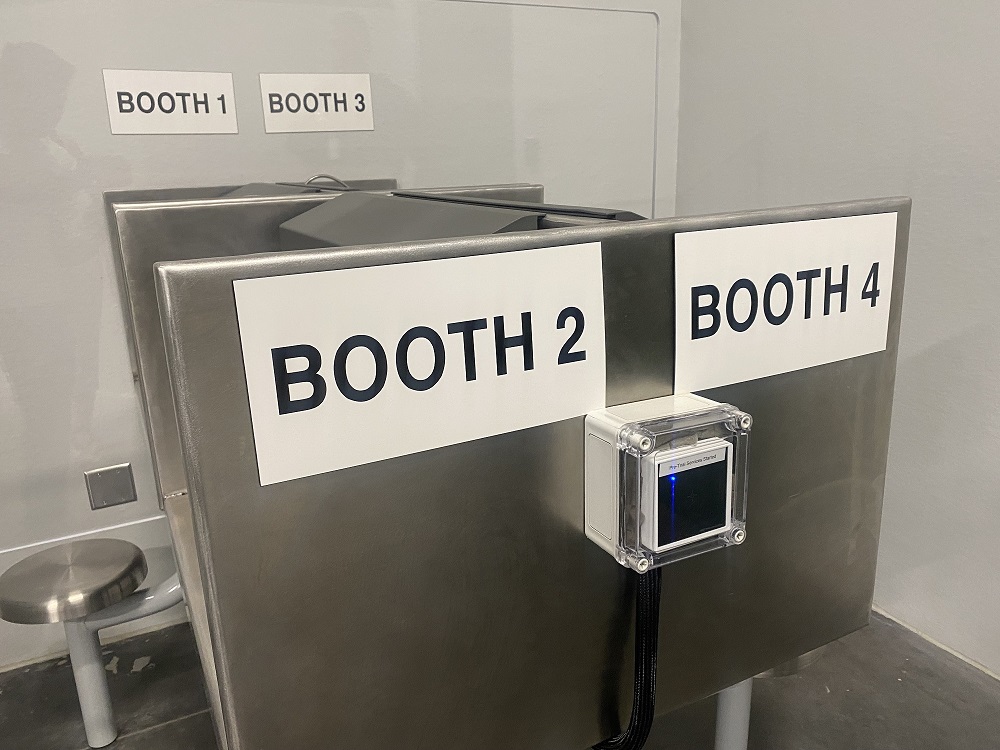
Benefit 5: Improved Safety
The arrestee waiting area is under constant supervision from the Sergeant's office as staff oversee the whole area from an elevated office through glass windows. They see everyone seated, at the phone booths, in medical, and using the pretrial services. This Sergeant's office is unique with its platform as it’s raised from an elevated point of view with high-def cameras that are always live. (Fun fact: all phone calls are recorded, but proceeds from the paid phones go directly to the county and not the processing center.)
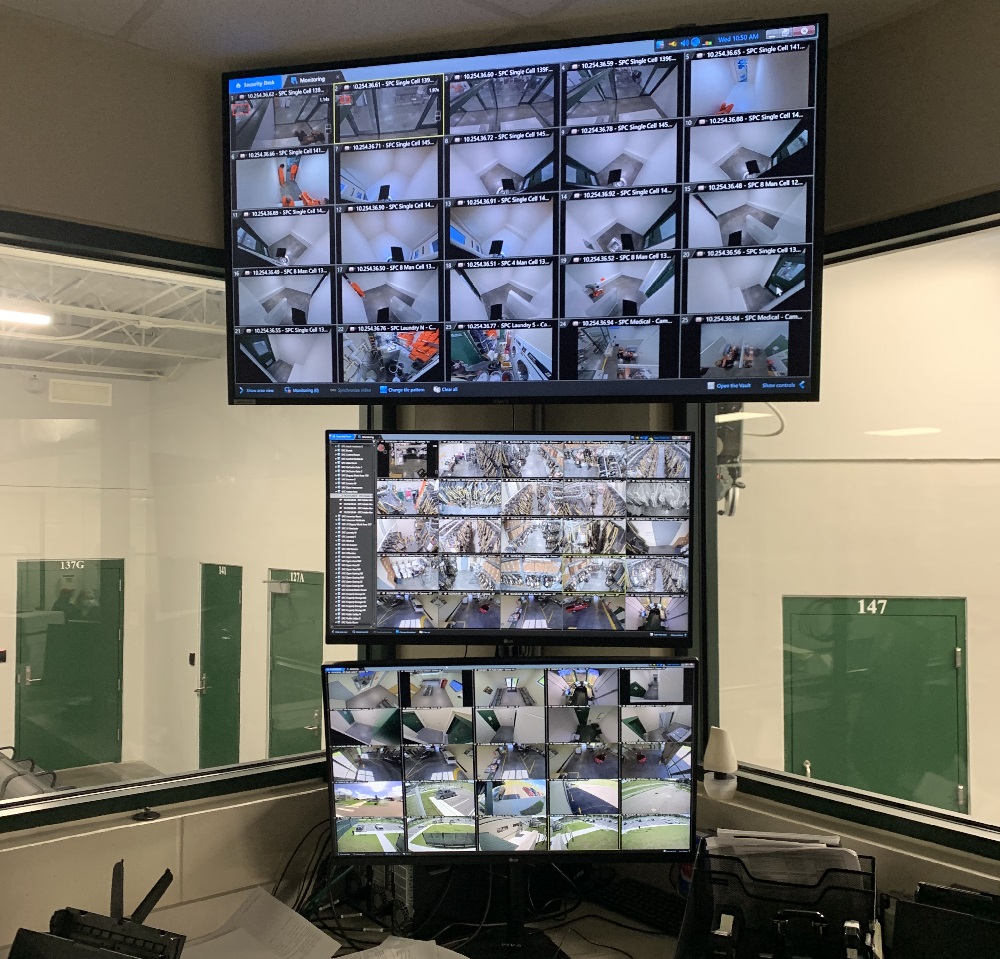
Soon enough, the staff working in the classification room will install a pneumatic tube that shoots over paperwork from the booking station to eliminate the need for officers to leave their desks. Not only does the facility staff take extra safety precautions, but the building was built so the guests (non-arrestees) visiting the facility are protected as well.
Anyone entering the facility as a guest is presented with three different lobbies to enter as they walk toward the processing center. One entrance for dropping off bonds, one entrance for offender registration, and one entrance for picking up inmates being released. Although these entrances share the same parking lot, they are unlikely to cross paths once entering the facility, furthering safety standards.
Planning Your County Jail’s Future Facility
For anyone considering building a separate processing center for their inmates, the reward is massive. In Polk Co., there are usually 22 civilian staff and five deputies on an average day, and they each get to work in the facility amenities while also feeling extra protected by the building’s built-in safety precautions.
When I asked Captain Tom Laurell what he would recommend for other facilities considering this approach for a processing center, he shared some insightful advice. He recommended to travel and tour other facilities to gather ideas and combine them with the ideas your team wants to personally implement. Then, sit down with your team and draw out a plan where everyone expresses their opinions and discusses the budget. Thus, you’ve already started creating your future facility’s blueprint.

